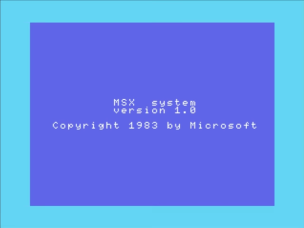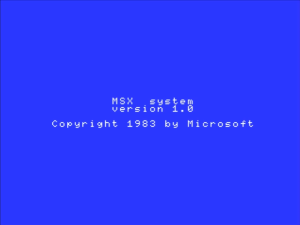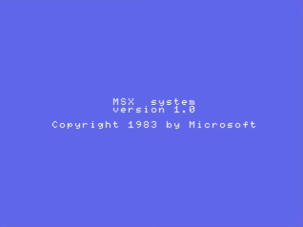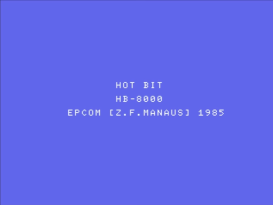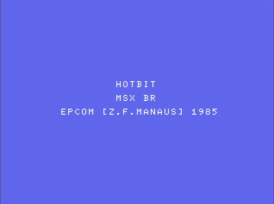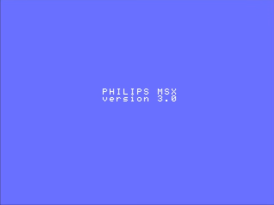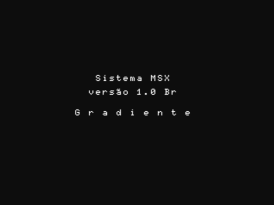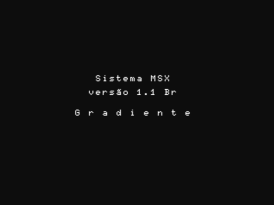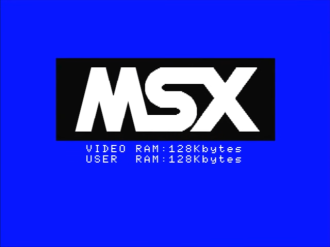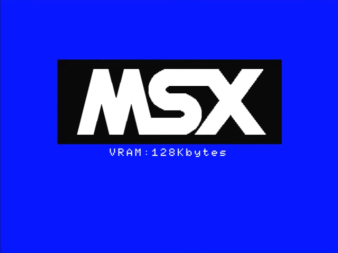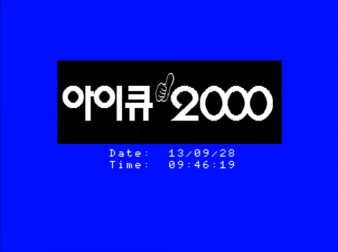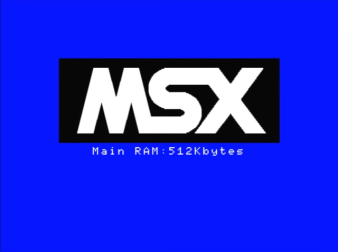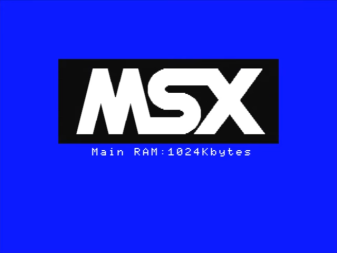MSX
Jump to navigation
Jump to search
1st Screen
FX/SFX:
Music/Sounds: None.
Availability: Scarce. You see this when booting up an MSX or a Japanese Virtual Console MSX game from a Nintendo console. MSX2 existed from 1985, and the later version can be found on MSXturboR systems (made from 1990 onwards). MSX computers were then made by lesser manufacturers than the original years although a number of systems are known to still surface today. For the MSXturboR computers, Panasonic was the only one to make them, so if you find a 90s MSX computer, then it should be from this brand. This screen doesn't appear if you have another MSX BIOS installed (in a famous case, C-BIOS). This made a surprise appearance on the Metal Gear games packaged in Metal Gear Solid 3: Subsistence on PS2 and Metal Gear Solid HD Collection on PS3 and XBox 360.
Scare Factor:
The printable version is no longer supported and may have rendering errors. Please update your browser bookmarks and please use the default browser print function instead.
Background: MSX is the name of an 80s computer system architecture announced by Microsoft in 1983. The idea behind the architecture was to make various electronic brands begin to develop their own computer models. MSX systems saw a very rare light on the United States and the United Kingdom, but it was very popular on various parts from the world, mostly Japan, South Korea, other European countries (including the Netherlands and Spain), Brazil and Argentina. The system marked importance on the 8-bit video game industry, with Hudson Soft and Konami being the most active developers. After it's demise in 1995, the MSX was marked as one of the most popular 8-bit computers along with the Commodore 64, ZX Spectrum, Apple II and NEC PC-98.
(1983-1985?)
Screen: On a cyan background, a light blue rectangle quickly appears, having the white text "MSX system", "version 1.0" and "Copyright 1983 by Microsoft". Everything then dissapears.
Variants:
- On some computers, the background is all in a darker shade of blue.
- A Daewoo/Yeno IQ1000 variant has the Korean text and model number above the logomark, with "MSX (more Korean text) version 2.0" and "Copyright 1984 by Onix" seen below.
- Sharp/Epcom Hotbit computers had the light shaded blue background with the text "HOTBIT", "HB-XXXX" and "EPCOM [Z.F.MANUALS] 1985". On Brazilian computers, the model number was changed into "MSX BR".
- Phillips-branded computers had the same background as the Hotbit variant but with the simple text "PHILLIPS MSX" and the version number.
- Other Brazilian computers featured a black background, the text "Sistema MSX" and "versao 1.x Br", and the spaced out "G r a d i e n t e".
- If an original MSX computer has X2 BIOS, a variant of the blue background variant will appear, changing it to the light shade of blue of the original rectangle logo.
FX/SFX: None.
Music/Sounds: None.
Availability: Extremely rare. You can see this when you boot up an original MSX system or an early MSX game on it.
Scare Factor: None.
2nd Screen
Nickname: "MSX in a Box"
Screen: On a blue background, a black box with the letters "MSX" in a futuristic font rises up. "VIDEO RAM 128kbytes" and "USER RAM 128kbytes" appear below the logo.
Screen: On a blue background, a black box with the letters "MSX" in a futuristic font rises up. "VIDEO RAM 128kbytes" and "USER RAM 128kbytes" appear below the logo.
Variants:
- There is a variant (possibly seen on MSX2+ computers) where two striped copies of the logo slide in from the sides and merge. Instead of the video and user RAM, the main RAM info (possibly merged information about the computer's memory components) of the computer is shown.
- MSXturboR computers had the box appearing with a quick line wiping effect. Again, only the main RAM info of the computer is shown.
- Some MSX2 computers only show the VRAM information.
- Also, another MSXturboR variant shows the logo wiping in slower than usual.
- On Daewoo/Yeno IQ2000 computers, the "MSX" text of the box is replaced by the Korean text and a "2000", with a hand doing thumbs up in between. Instead of the RAM information, we see the date and time of the computer.
FX/SFX:
- The rising of the logo (for the original MSX2 variant).
- The merging of the logo (for the MSX2+ variant).
- The wiping of the logo (for the MSXturboR variant).
Music/Sounds: None.
Availability: Scarce. You see this when booting up an MSX or a Japanese Virtual Console MSX game from a Nintendo console. MSX2 existed from 1985, and the later version can be found on MSXturboR systems (made from 1990 onwards). MSX computers were then made by lesser manufacturers than the original years although a number of systems are known to still surface today. For the MSXturboR computers, Panasonic was the only one to make them, so if you find a 90s MSX computer, then it should be from this brand. This screen doesn't appear if you have another MSX BIOS installed (in a famous case, C-BIOS). This made a surprise appearance on the Metal Gear games packaged in Metal Gear Solid 3: Subsistence on PS2 and Metal Gear Solid HD Collection on PS3 and XBox 360.
Scare Factor:
- None for the MSX2 and MSX2+ variants.
- Minimal for the MSXturboR variant due to its very fast appearance, although the slower variant is tamer.
Logos can be seen here:
<iframe frameborder="0" height="207" src="http://wikifoundrytools.com/wiki/closinglogos/widget/unknown/06a7b8503422be169ff420cb09102f645b1467b7" width="366"></iframe>
